MARKET OVERVIEW
The Global Modular and Volumetric Building market will bring to the nature of structure conception and building, thus taking the construction sector to unorthodox poles of efficiency and sustainability. This market path seems to enlarge with increasing demand for shorter construction schedules, cost-effectiveness, and ecological conscience. The higher the rate of urbanization in real-time, the stronger the call for more innovative construction concepts becomes with greater environmentally friendly inputs. Modular and volumetric concepts entail prefabricating sections assembled on-site, admitting a gradual transition that would present highly scalable, customizable, and resource-efficient alternatives.
The rest of the Global Modular and Volumetric Building market is set to develop in association with advanced technologies, such as automation, robotics, and 3D printing. Once these innovations become widely available, it is expected that the modular building industry will gain efficiency and accuracy in the construction of modular units. Following this would, therefore, imply reduced construction costs and reduced construction timelines, which will most probably be of critical importance for industries needing rapid deployment of structures. Those industries may soon include a wider array of sectors, ranging from residential and commercial to industrial developments.
Market changes will not only be technological but also with reference to design standards and building codes. As green building garners more pressure, a lot of governments will be likely employing other standards towards recyclable and energy-saving materials. These policy changes would lead to a wider adoption of environmentally friendly practices on the part of manufacturers and push the whole industry towards greener pastures. Modular and volumetric buildings, therefore, will soon become ubiquitous as the end consumers become more aware of green housing, which will further shrink the carbon footprint of the buildings constructed.
Furthermore, factors such as increasing economic pressures and labor shortages will push a lot of stakeholders to adopt such modular processes. Predictions will show that labor costs are going to soar; thus, companies using prefabricated components that are easily assembled with a smaller workforce will provide counteraction to that condition. Modular structures to a greater extent eliminate the need for skilled labor unlike traditional building methods, and make construction faster, easier, and more economical.
Apart from short-term and long-term requirements, modular designs will soon provide flexibility and adaptability to design a variety of sets. Temporary buildings now cost-effective solutions for disaster-stricken areas short on housing, or as makeshift offices in the city: These very structures, once seen as cheap or utility class, will come to be known and recognized as luxury models-customizable to meet the diverse needs of the modern consumer. Because of course future modular buildings will also be incorporated into luxury accommodation schemes, into high-rise apartments, and even into very specialized spaces like healthcare and education facilities.
Market acceptance is another emerging challenge for the Global Modular and Volumetric Building market. Although these systems have stood the test of efficacy, public acceptance is not instantaneous; skepticism persists in certain circles concerning the quality and durability of modular structures. Nevertheless, as success stories continue to abound within the industry's life cycle, it is expected that the perception of modular buildings will continue to improve, making them ever more attractive to investors, architects, and developers alike.
To summarize, with the coming of time, the Global Modular and Volumetric Building sector will set construction in the future. The growth trajectory will be largely influenced by technology, sustainability trends, and fast and economic alternatives. These technologies will change the way construction is practised worldwide, paving the way for a more sustainable and innovative urban environment.
Global Modular and Volumetric Building market is estimated to reach $22,436.5 Million by 2032; growing at a CAGR of 8.7% from 2025 to 2032.
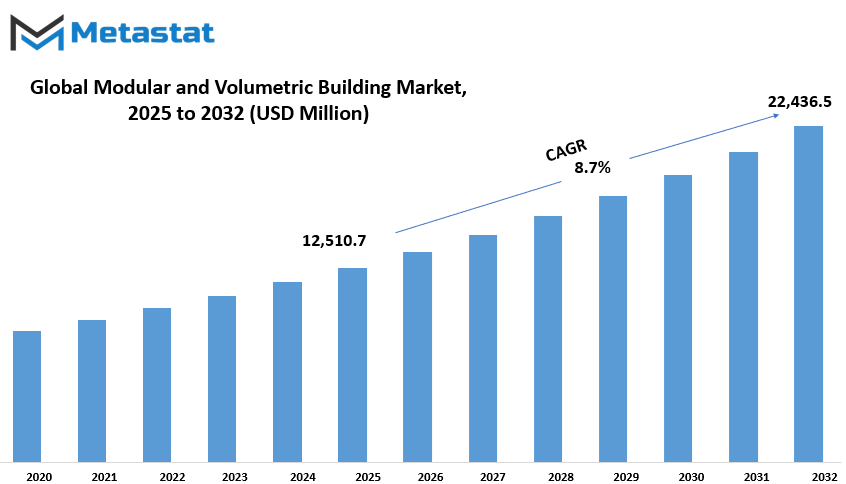
GROWTH FACTORS
The global modular and volumetric building market have experienced unexpected developments, which can be attributed to the growing popularity of building sustainability and energy-efficient structures. Today, consumers and developers are being more conscientious of the environmental impacts associated with a construction activity, thus prompting each to explore ways of waste aversion and consumption of energy. Indeed, one of such best answers is making use of modular architecture or pre-manufactured items fabricated in some controlled environments and assembled at a site. It is not only sustainable but also resource efficient. Thereby material is waste-minimized, energy efficiency is increased through sustainable modes of construction, which is becoming the spotlight of developing markets.
Another major driver is the increased acceptance of modular construction. Faster project schedules and lower overall costs have proved quite attractive to many building companies against using traditional construction methods. Traditional construction projects are long and also spend millions with delay resulting in a cost that was unforeseen. But with modular construction, a large amount of work takes place in the factory so that most of it can be done outside the site. Because of this, the overall process becomes simpler, and a project can thus be finished within the same time and costs budgeted. This has contributed to a greater demand for modular solutions across the residential, commercial, and industrial sectors.
Much as there are advantages to the market, there are also obstacles to its expansion. One major obstacle is the high initial capital investment needed for modular construction works. This makes the construction of modular units, particularly on a large scale, expensive due to the need to employ specialized tools and highly trained workers. Sometimes getting finance for such construction work becomes difficult, especially for new companies or startups. These financial barriers can inhibit the acceptance of the modular construction methodology in regions where capital is not easily available.
Another regard for the difficulty arises in consumer awareness. Therefore, many are still unaware of modular construction and may resist their acceptance. Each of several operational advantages of modularization, such as lowering some environmental impacts and providing a quicker route to completion, struggles to overcome another consideration-poor marketing against potential consumers and developers.
But there's a bright future, which holds many opportunities for the markets to grow. As the world keeps urbanizing, so does the demand for affordable housing solutions. Modular build offers an excellent solution: They tend to be much cheaper than traditional methods. Another thing that makes this construction type even more attractive to developers is that the technology is advancing in such fields as 3D printing and automation, which is improving the efficiency and accuracy of modular construction increasingly. These innovations will provide savings. They will increase the quality of construction while speeding up project completion.
To sum up, though global modular and volumetric building market conditions are not without their challenges, such as hefty initial investments and below-par consumer awareness, there appears to be immense potential for growth in the sector. Undoubtedly, the market will evolve and accelerate even more over the coming years, giving new opportunities for the ones who have entered the world of these multifaceted innovative building methods with such a continuous thrust towards sustainability, urbanization, and technological advancement.
MARKET SEGMENTATION
By Type
The development of modular and volumetric buildings all around the world has become somehow necessary owing to the efficient and flexible answer to much modern construction requirements. Faster and cheaper construction methods have boosted interest in modular construction. Modules are construction units built in the factory and taken to the site for assembly. Modular construction saves time and labor, limits wastage, and reduces on-site disturbances. Modular building is a solid alternative that will continue to grow during this time when the construction industry seeks smarter means of working.
The modular and volumetric buildings market bifurcates itself according to types and volumetric buildings, worth $5,905.7 million, is one of the biggest divisions among them. These buildings are precast as complete units and transported to construction sites for installation subsequently. This has definitely resulted in a faster process and better quality control, as the construction process happens under controlled parameters. Besides volumetric buildings, hybrid modular systems, panelized systems, and portable buildings are available. Hybrid modular systems utilize diverse construction techniques to make the process more adaptable. Panelized systems are built using flat structures, such as walls and floors, that users assemble on site. Portable buildings are designed for movement and are typically used for temporary setups such as classrooms, offices, or healthcare units.
The need for sustainable and affordable houses is yet another reason why this market is expected to grow. Rapid urbanization has led to an increase in population and, therefore, a demand for faster solutions to housing needs. Modular buildings, in particular, can address this need, but with design flexibility. They can be adapted to suit varying requirements-whether for residences, schools, hospital-, or commercial space. With the low-on-time and cost benefits of this segment of the market, governments and private players have geared up investment in it.
On the whole, the modular and volumetric building market is steadily advancing. Since it can answer current construction challenges, the modular and volumetric building definitely plays an important part in tomorrow's construction. As advancement in the availability of new materials and technologies occurs, the process will become even better oriented toward efficiency and access. Therefore, in terms of promises for fast-track delivery, cost-effectiveness, and quality, modular construction is not merely a passing interest; it will mark a permanent change in our construction practices.
By Application
Most definitely, of late, the Modular and Volumetric Building market has been advancing steadily in the sense that it offers construction in shorter time frames and at lesser costs, besides better-quality control. This necessarily involves building sections of a building off site and then transporting them to final assembly on-site. In fact, modular and volumetric ranged construction continues growing in demand due to waste reduction, shortened timelines, and improved safety on-site. It provides the construction industry with alternative means to meet demands on smarter and much more sustainable solutions; hence the approach is quite a strong alternative to traditional methods of building.
Depending on application, the market is divided into various sectors old. Modular construction is idealized for residential buildings that range from apartments to villas to townhouses, as it speeds up the construction process beyond which occupants are expected to enjoy good living standards. Many developers have opted for this method because of the demand for housing, which has subsequently increased with urbanization where time and space manage to meet quite limited: therefore, flexibility in the design and construction process noise given to the surrounding community is the least possible.
In commercial buildings such as hotels, retail areas, and office buildings, modular techniques use time savings associated with reduced construction costs. The space is created earlier for businesses and begins operating sooner. For instance, institutional buildings such as schools and hospitals typically do not take too long to be completed because of the people who need to have flexible plans. Thus, when urgent public needs arise, these buildings have to be up so fast. Modular elements really provide builders with functional and safe spaces in the least possible time. In health care, this is even more beneficial because it provides quick access to units that can save lives in many communities even before the completion of construction.
Manufacturing buildings, which include warehouses and factories, can now import modules in order to hasten their readiness for operation. Since these structures need large open spaces very often, prefabricated units help maintain their strength as well as keep reduced construction times. Most companies in this sector benefit from less downtime and better cost control provided by modular methods.
Hospitality and tourism encompass hotels and resorts using modular construction to expand quickly and deliver highly finished products. The industry runs on comfort and style, and precision in modular construction ensures that the final result meets both aesthetic and functional expectations. With the take-up of more such sectors, the Global Modular and Volumetric building market will continue to expand and change the modes used to construct buildings.
By Structure Types
The Global Modular and Volumetric Building market is being stimulated by the increasing demand for quicker and cheaper construction methods. Faster project delivery, reduced waste, and better quality control are advantages of these building modes. The market is being increasingly recognized by the residential, commercial, and industrial sectors because of their flexibility and efficiency. One very crucial advantage is that when large building sections are made off-site under controlled conditions and transported to the final location for assembly, time constraints are highly relieved and disruptions at the construction site are minimized.
Structure types divide the market further into Steel, Wood, and Other materials, which are Concrete, Hybrid, etc. Each material has its own pros and cons concerning any specific application. Steel proves strong, durable, and capable of propelling really large structures; and very often it is needed to perform well in regions that strongly require structural performance. Wood, on the flip side, tends to be used for smaller structures or dwellings since it is more light and easier to work with; and it's preferred as being much less environmentally harmful, especially if obtained in a very responsible manner. The Other category, which ranges from concrete to hybrid materials, presents an advantage of pulling together the positive aspects of different materials and often achieves a good compromise in insulation, fire resistance, or cost.
Global demand would keep on increasing because the market is not confined to either region or sector. Urbanization indeed goes hand in hand with housing, offices, schools, and hospitals. Modular and volumetric building systems are time-efficient and cost-effective answers to meet those needs. Developers and states are beginning to realize the viability of this approach, especially in regions where speed and quality are the main goals. At the same time, it also brings reduction of labor costs, which is key in areas with less skilled manpower or expensive labor.
Thus, the Global Modular and Volumetric Building market is making future construction a fast, clean, and flexible building process. It has varying options, such as steel and wood, and includes any combinations with which builders and developers can work to meet different needs. As industries come to appreciate the effectiveness of this construction technology further, it would inevitably broaden and reshape the future of construction.
By Region
The Global Modular and Volumetric Building market is being counted to grow at a steady pace and has caught the eye for all the efficiencies, cost-effectiveness, and time savings benefits. These entirely new forms of construction require buildings to be built off-site and then transported and assembled at the construction site. This can decrease the time it takes to construct, usually results in less waste, which is good for both business and the environment. Construction has been influenced by increased demand for quicker construction, especially for areas that experience slow progress due to traditional building process interruptions due to weather.
Geographically, the global Modular and Volumetric Building market is subdivided into Norway, Sweden, Denmark, Finland, and Iceland. Each of these countries, particularly and in different ways, has been focusing on sustainable development and innovations that fall within the concerns of modular and volumetric construction. In Norway, government and private sector collaboration ensures that such construction solutions are faster to deliver and have lower environmental impact. Sweden is one of these countries, being the world's ambassador in green practice since modular construction is a good systemic step toward achieving this goal. Denmark is still investing in smart infrastructure, and this fits perfectly into a vision of modern sustainable cities. Modular building is finding its way into the Finnish construction market because modular construction enjoys a better level of quality control, which is paramount to a long winter country.
The origin of this method in countries is that the residing feature brings the method into consideration as per their complete requirements on clean energy, carbon footprint reduction, and efficient use of resources. Modular and volumetric building opens a practical way forward for a quick-to-build structure with conservation in quality. In addition, the flexibility in design and construction is suitable in urban planning as well as in meeting modern living needs. These countries are expected to enjoy continuous investment in this area as new technologies and sustainable practices advance in general.
Summarizing, Strong Ground is found in the Global Modular and Volumetric Building market in Norway, Sweden, Denmark, Finland, and Iceland as these countries can figure as future makers of buildings focused on better, cleaner, and quicker ways to meet social housing and infrastructural produce. This type becomes clearer: it will develop constantly and transform the way buildings are constructed.
|
Forecast Period |
2025-2032 |
|
Market Size in 2025 |
$12,510.7 million |
|
Market Size by 2032 |
$22,436.5 Million |
|
Growth Rate from 2025 to 2032 |
8.7% |
|
Base Year |
2024 |
|
Regions Covered |
North America, Europe, Asia-Pacific, South America, Middle East & Africa |
REGIONAL ANALYSIS
The global Modular and Volumetric Building market is anTherefore, the report is segmented on the basis of different regions: North America, Europe, APAC, South America and Middle East and Africa. Each of the above regions comprises many countries that require individual scrutiny for better understanding of the market. The USA, Canada and Mexico are the major countries covered in the North American market where there is a growing shift from conventional building processes to modular and volumetric construction due to rising demands for quick and cost-efficient solutions in building. The USA seems to be leading, with mega construction projects and growing demand for affordable housing for the world's population.
This European focus comprises countries like the UK, Germany, France, Italy, and the rest are appended to the term Rest of Europe, such as Germany and the UK putting sustainability high on their agenda, and modular methods provide an adequate response towards ever-increasing environmental concerns. Besides, emerging demands include health and senior housing needs, which favor the new construction practice especially among the older population segment in Europe.
Asia Pacific comprises some of the highest growth rates in this market. Some of the countries under this region include India, China, Japan, South Korea, and the other Asia Pacific countries. Rapid urbanization and a rise in population in urban India and China would drive demand in the provision of housing and infrastructure services. Modular construction will fill the gap between the housing crisis and a need for infrastructure because these types of projects engage high use of space in addition to increasing the unit productivity in buildings.
Under this region, South America includes Brazil, Argentina, and the Rest of South America. Despite this, the region is still catching up in the field of large-scale modular construction; Brazil, on the other hand, is gradually but steadily moving in this direction. Gradual interest in developing low-cost housing has come from development in the economy as well as necessity.The Middle East and Africa segment comprises GCC Countries such as Egypt and South Africa as well as the rest of the Middle East and Africa. Growth in this area is linked to urbanization and government-sponsored development projects. In addition to modern construction methods, investment by the UAE and Saudi Arabia will contribute to social housing and long-term national targets. The opposite of this situation occurs in Africa, where construction firms in South Africa are beginning to slowly accept faster, more affordable methods of construction.
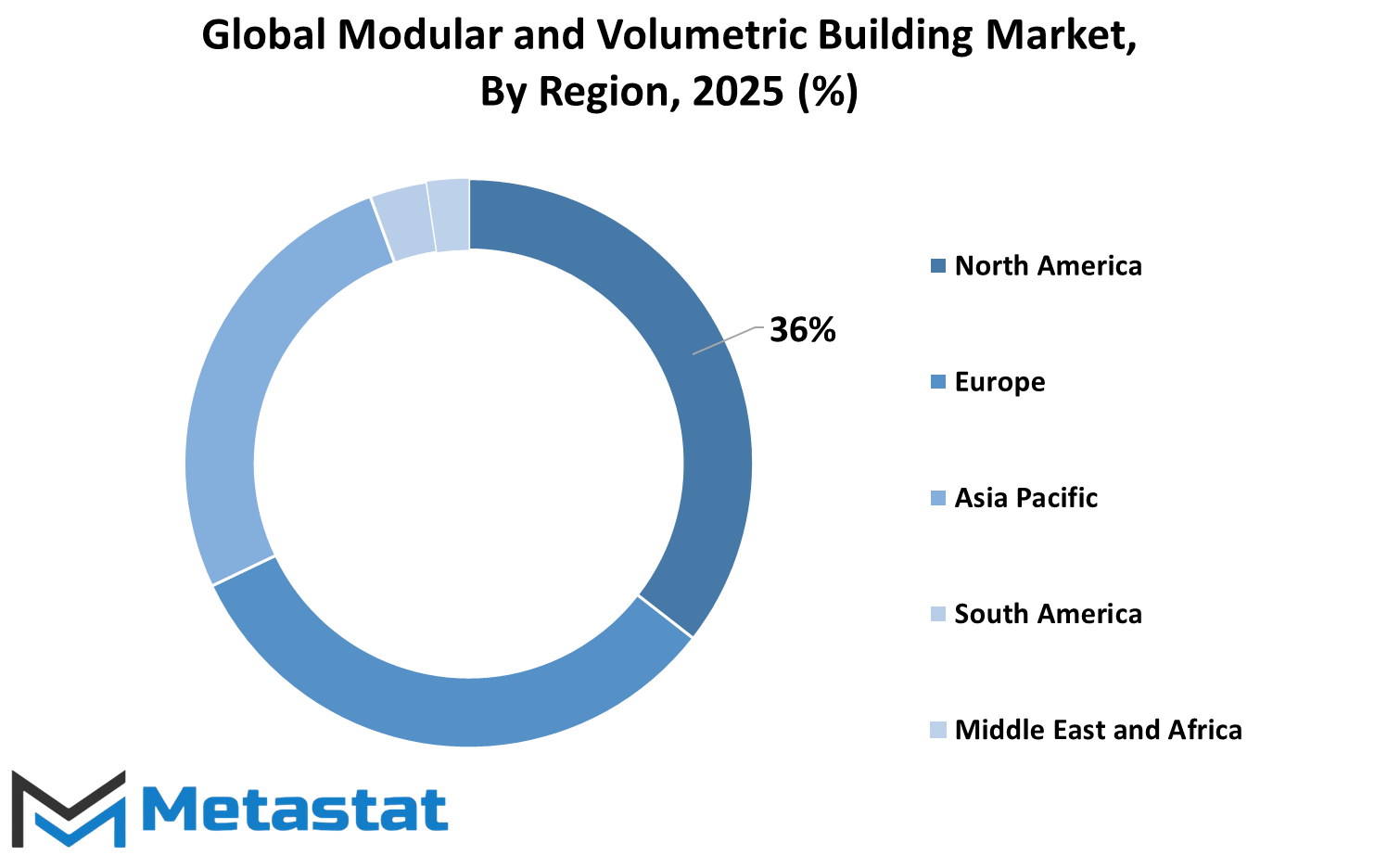
COMPETITIVE PLAYERS
In recent times, the Global Modular and Volumetric Building market is flourishing day by day under the guidance of several key drivers or influencers for creating this specific industry. The leading players in this space include Adapteo Oy, Modulaire Group, Volumetric Building Companies LLC, Lindbäcks Bygg AB, Norreq AS, Danish Modular System ApS, Moelven Industrier ASA, Derome AB, YIT Suomi Oy, Metsä Group, Elematic Oyj, and Ramirent Modular Factory AS. These sectors continue to produce cutting-edge solutions and manufacturing techniques for construction. They tend to increase the speed and quality of construction while decreasing both cost and waste. Modular or volumetric construction involves factories assembling parts of buildings and delivering sections to site for installation. Such methods save time and delay through weather and labor shortages.
Clearly, modular construction is gaining ground in becoming the quick yet eco-friendlier approach for most governments and even private developers. The pressure from increasing housing, schools, offices, and healthcare buildings requires such companies to innovate their designs and scale up their capacity. Modular buildings can be customized as per needs while delivering good quality. Much of the work is actually executed outside of the premises, which results in great safety and less disturbance in the surrounding areas.
Many of these identified key players have proven themselves in the market and Adapteo Oy and Modulaire Group clearly fit in this category as providers of flexible temporary and permanent spaces. Another example comes from Lindbäcks Bygg AB and Derome AB, which concern themselves mostly with wooden modular buildings for environmentally friendly practices. Furthermore, there are others such as Elematic Oyj, bringing their advanced equipment and technology for manufacturing.
The pressure to build faster and smarter will create a bigger role for modular and volumetric construction. These methods will be increasingly more widely regarded as applicable to long-term rather than just short-term projects into which buildings will be expected to last for many decades. Investment by even more companies in research and technology will assure better quality and design options in what will soon become available in the industry. While most of these players improve their products, they redefine and set higher levels in building enjoyment. It would be likely that further improvement could change the construction approach around the world, providing practical solutions to some of the longstanding problems facing construction as an industry.
Modular and Volumetric Building Market Key Segments:
By Type
- Volumetric Buildings
- Hybrid Modular Systems
- Panelized Systems
- Portable Buildings
By Application
- Residential Buildings (Apartments, Villas, Townhouses)
- Commercial Buildings (Hotels, Retail Spaces, Office Buildings)
- Institutional Buildings (Schools, Hospitals)
- Industrial Buildings (Warehouses, Factories)
- Hospitality and Tourism (Hotels, Resorts)
By Structure Types
- Steel
- Wood
- Other (Concrete, Hybrid, etc.)
By Region
- Norway
- Sweden
- Denmark
- Finland
- Iceland
Key Global Modular and Volumetric Building Industry Players
- Adapteo Oy
- Modulaire Group
- Volumetric Building Companies LLC
- Lindbäcks Bygg AB
- Norreq AS
- Danish Modular System ApS
- Moelven Industrier ASA
- Derome AB
- YIT Suomi Oy
- Metsä Group
- Elematic Oyj
- Ramirent Modular Factory AS
WHAT REPORT PROVIDES
- Full in-depth analysis of the parent Industry
- Important changes in market and its dynamics
- Segmentation details of the market
- Former, on-going, and projected market analysis in terms of volume and value
- Assessment of niche industry developments
- Market share analysis
- Key strategies of major players
- Emerging segments and regional growth potential



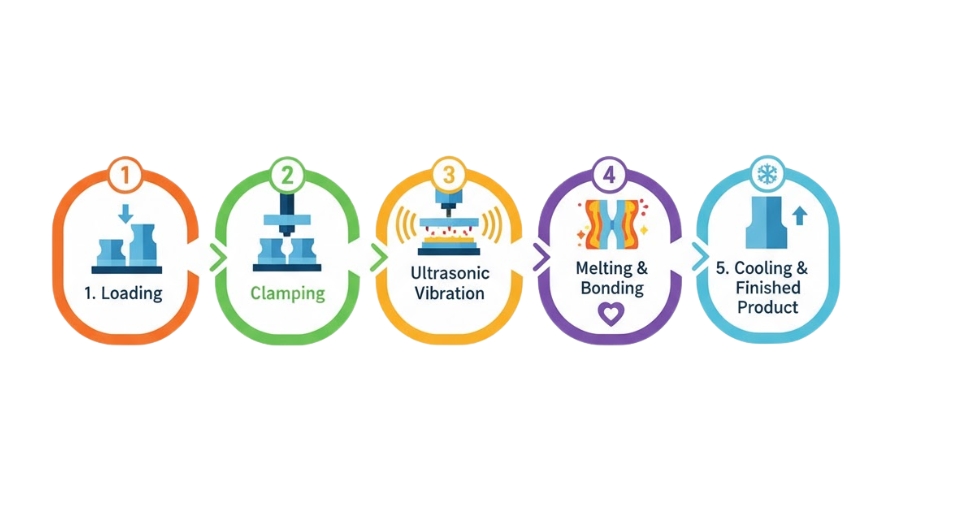
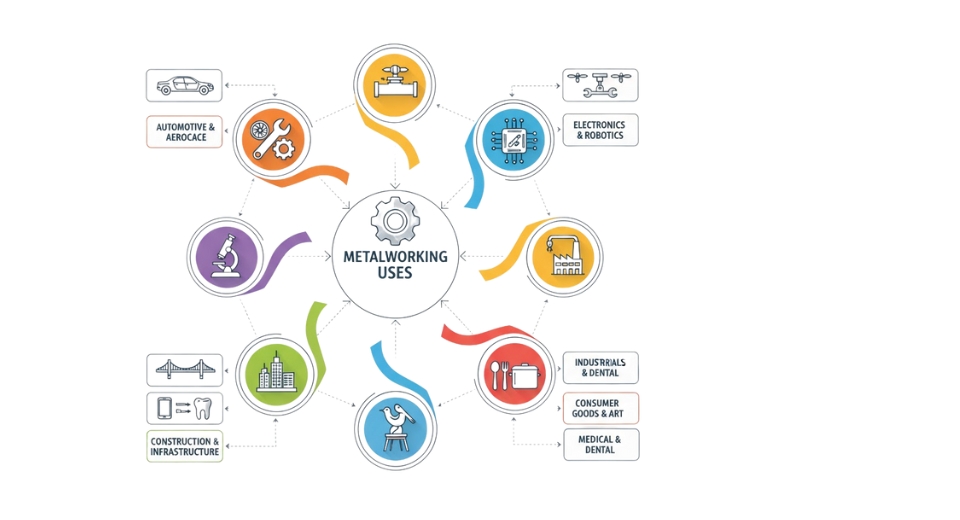
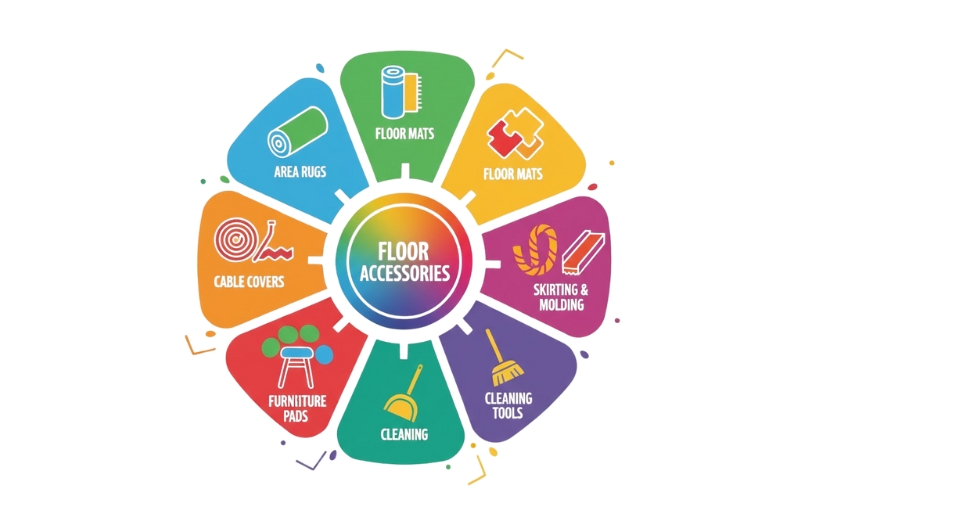


 US: +1 3023308252
US: +1 3023308252






